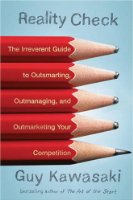 My post on social media for scientists seems to have been received rather well, with a huge amount of traffic and positive responses from various big name commentators across the networks and blogosphere.
My post on social media for scientists seems to have been received rather well, with a huge amount of traffic and positive responses from various big name commentators across the networks and blogosphere.
Several scientists have already commented about the post over on Nature Networks. Nature’s own Maxine Clarke describe it as “an amazingly useful post” but was worried that there seem to be so many scientific social media clones now available. It is, she says, “It is hard to see them all enduring.” But, that’s not surprising, natural selection and survival of the fittest will kick in. Indeed, it already is happening to a degree. Some of these communities are fast approaching critical mass.
For instance, Joerg Heber is also concerned that there lots of clones and that although the trend is towards increasing fragmentation of our online identities, he points out that SciLink.com now has 44000 users or thereabouts, whereas SocialMD, claims just 3100. “In the end,” he says, “there surely will be a concentration process for all those sites and only a few will survive. There likely will be a self-accumulating user base for the most successful ones, as the more users there are the more sense they make.”
But, compare those figures with the likes of LinkedIn (30 million users) and Facebook (120 million) and one has to wonder what is the purpose of creating a niche community external to such sites, when one might simply create a group within those and have access to potentially millions of like-minded individuals. Indeed, it never occurred to me to create a standalone science writers community online, I simple organised a Facebook science writers group, which now has almost 400 members. Obviously, there are fewer science writers than scientists.
Heber concedes that LinkedIn and Facebook may not be perfectly suited to scientists, but wonders whether the networking sites I listed in the original post really are specific to scientists? “Can you share lab books and wikis?” he asks.
Martin Fenner mentioned ScienceOnline’09, which I do hope to attend (looking for a sponsor, right now). This unconference, which will be for scientists and science communicators alike will, he says, have a session on social networks for scientists, moderated by my good friends Cameron Neylon of Science in the Open and Deepak Singh of bbgm.
Fenner followed up his original comment with the following, pointing out that AAAS Science Careers (Social Networking Grows Up) also had an article on this topic [which I hadn’t seen when I started writing the original Sciencebase post mid-October, db]. “They talk about a few social networking sites for scientists, but somehow fail to mention Nature Network,” Fenner says, “The article also mentions social networking sites set up by universities, including ResearchConnect (University of Manchester) and Small Worlds (University of Leicester). I didn’t know about this (unless you count the Facebook organisation by universities), but it looks like a good idea.”
Brian Willson of the Microsoft Chemical Team Blog gave my post a mention and noted that most of the sites are apparently aimed at academia rather than industry. He was curious to know whether web 2.0 and online communities would impact scientists in industry, a topic he has discussed previously on the MCTB.
44000 members is impressive (for SciLink), but have any of the social media sites for scientists really achieved critical mass yet? By which I mean do they have enough active members to become self-sustaining and useful to science and the communities they serve?
Way back in the 1990s, I used to work for two of the biggest proto-social media sites for scientists – ChemWeb and BioMedNet. The former had more members than the American Chemical Society (which at the time was around 140,000 I believe) and BMN even more at, if memory serves correctly, close to half a million, far more than Facebook and LinkedIn put together!).
Both CW and BMN were incredibly innovative (having been created by Vitek Tracz, chairman of the Science Navigation Group, and founder of the open access publisher BioMedCentral as well as the those two online communities). CW and BMN were running what were essentially blogs alongside their news and features output, providing preprint servers (in the case of Chemweb), member search tools, webinars and online conferences, and access to dozens of resources. Of course, they were never labelled web 2.0. This was, after all well before the .com bubble burst and the web was reborn.
Unfortunately, both CW and BMN were bought up by a giant shareholder-driven publisher (mentioning no names) and driven into the ground once the company realised it wasn’t making enough money from them. Which was a great shame, because they really could have made huge inroads into the very world we are discussing. ChemWeb.com lives on thanks to Chemindustry.com and is thriving in its new form as my regular readers will know from The Alchemist newsletter, but at the moment it is not quite the community-led system it once was.
In some sense, all these new social media sites for scientists are simply reinventing a well-worn wheel from a decade past and whether or not any of them will achieve the significance (at their height) of a Chemweb or a BioMedNet remains to be seen. Offline scientific networks/societies continue to grow as they have done since their earliest days in the nineteenth century and before (their online efforts don’t seem to have yet built the online communities that could exist)
Given that many of the online efforts are insignificantly small in terms of membership numbers compared to the now defunct BMN and compared to the offline presence of the bigger scientific societies, I seriously doubt that more than one or two will survive and thrive. But, we’ll have to wait and see. Perhaps it will take a killer application for one to emerge as a leader and become as essential to scientists as MySpace is to a teenybopper and Facebook is to students. That killer application, however, remains to be revealed.
 The
The  Welcome fellow twitterers, don’t forget to follow me on
Welcome fellow twitterers, don’t forget to follow me on  All of what Kawasaki discusses is about people whether he’s explaining the top ten lies of venture capitalists or how old geezers can capture or enrapture the youth market, whether he’s telling you about how late he came to blogging or how creating a community is not just the latest fad, something
All of what Kawasaki discusses is about people whether he’s explaining the top ten lies of venture capitalists or how old geezers can capture or enrapture the youth market, whether he’s telling you about how late he came to blogging or how creating a community is not just the latest fad, something  The
The  My latest science news is now online in the spectroscopyNOW ezine. This week:
My latest science news is now online in the spectroscopyNOW ezine. This week: My post on
My post on